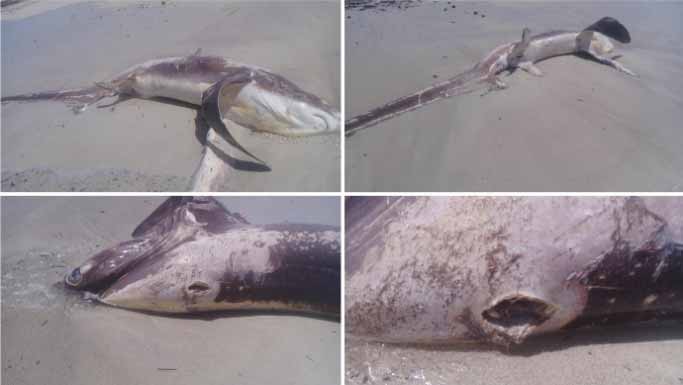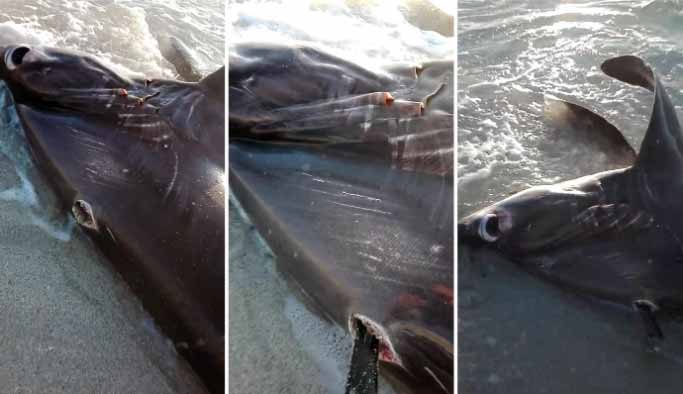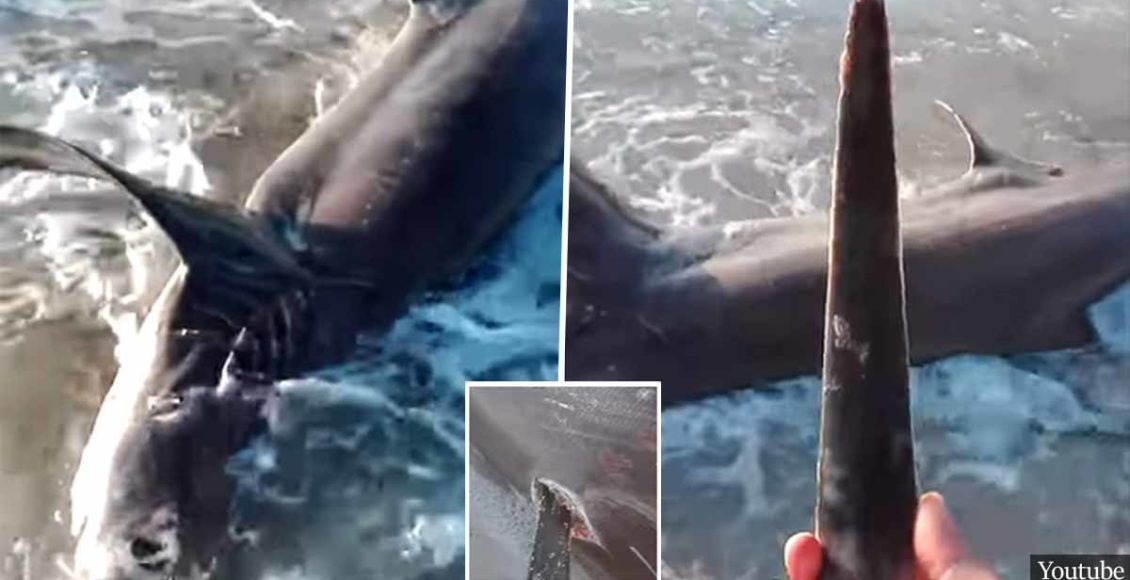An 11” swordfish blade found in a dead shark’s back on a beach in Libya.
- A shark killed by a swordfish’s blade was found on a Libyan beach.
- The person who found the dead shark pulled an 11″ rostrum out of its back.
- This particular case reveals how deadly the swordfish’s spike actually is.

A recent study regarding the deadly interaction of swordfish and sharks described a case of a dead female thresher shark that was found on the coast near the town of Brega. According to the research, the shark died from penetrating trauma of a swordfish’s rostrum, Daily Mail reveals.
The lifeless shark was found by a resident at the end of the Libyan beach. The citizen then pulled an 11.8in(30cm) blade from the poor creature’s back. Terrifyingly, the spike is said to have punctured its heart.
As per the scientists working on the study, the swordfish that stabbed the shark measured about six feet long(183cm). It allegedly attacked its enemy from behind. What is more, the rostrum belonged to the swordfish Xiphias gladius, “which is a highly mobile, predatory fish known to attack sharks, whales, sea turtles, humans, and even boats.”
Such gruesome attacks have been chronicled since the 1960s. However, this particular discovery presents the first example of how deadly the swordfish’s spike actually is.
At first, the citizen science initiative ‘Marine biology in Libya’ could not see any evident signs of the exact cause of the shark’s death. But as soon as they took a closer look, they found out the creature, which was a little over 14 feet long(about 4 meters), had a gaping hole on its back. Explaining their discovery, the scientists wrote:
“The rostrum penetrated the shark in an acute angle of approximately 70 degrees to the anterior-posterior axis, directed towards the branchial apparatus, revealing that the swordfish must have been positioned dorsally from the shark and pierced it from behind.”

The fatal injury, which the researchers claim to be “the ultimate cause of death for the thresher shark,” is said to have occurred approximately three days before the animal was found.
Furthermore, the team clarifies that most of the attacks on sharks are done by juveniles. Contrarily, in this particular case, the thresher shark was an adult and nearly the same size as the swordfish.
“The swordfish involved in the current attack was not a juvenile, but roughly the same size as the thresher shark and, therefore, does not fit into its prey spectrum, which makes an attack as a defensive response unlikely.”
As the citizen scientists assume, the attack may have been accidental, in case the two animals have been feeding on the same prey. However, they also suggest that the scene may have been intentional.



